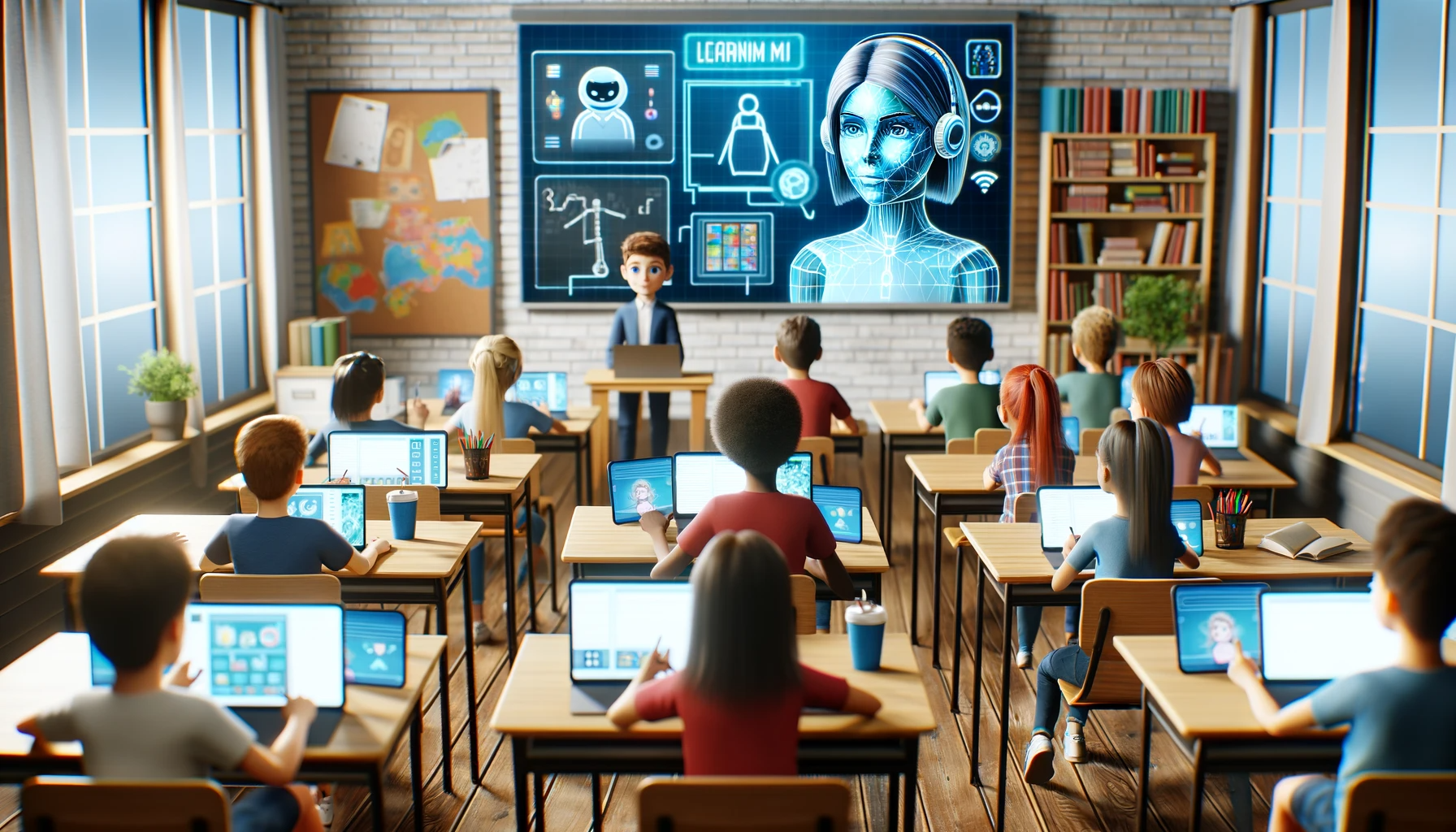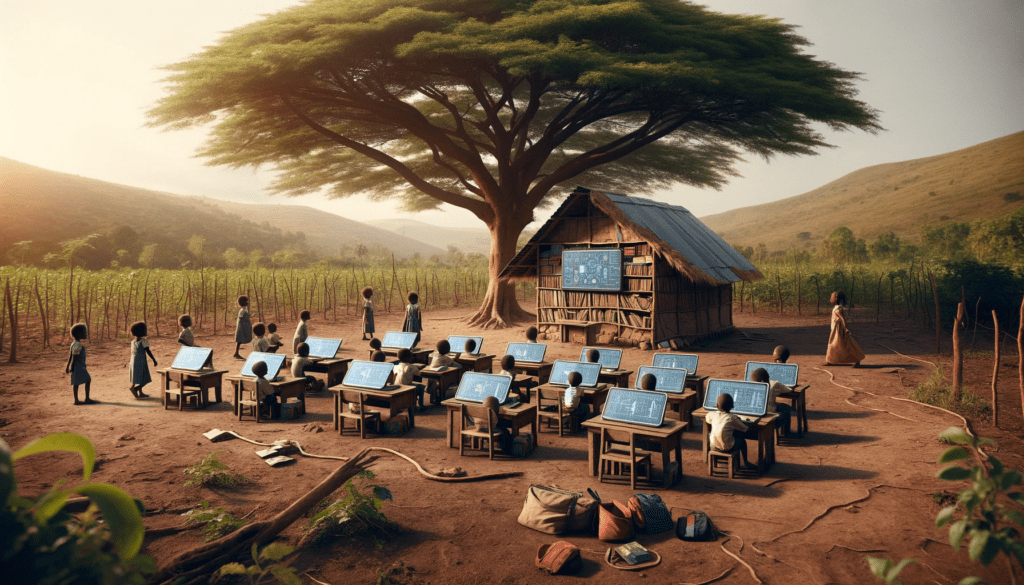Education is the cornerstone of human development, a powerful tool that can transform lives, uplift communities, and propel nations towards progress. Yet, despite its immense potential, the global landscape of education remains starkly divided. While some regions boast access to world-class educational resources and opportunities, others face a daunting chasm of disparities, where access to quality education is a distant dream. The question that looms large is whether Artificial Intelligence (AI), with its boundless capabilities, can be the bridge to span this divide.
Around the world, millions of children and adults find themselves on the wrong side of the education gap, residing in underprivileged or remote areas where traditional educational infrastructure is scarce or nonexistent. Factors such as lack of qualified teachers, inadequate learning materials, and a dearth of resources have perpetuated this divide, depriving generations of their right to quality education.
Enter AI, a technology that has reshaped industries, redefined problem-solving, and unleashed possibilities previously unimaginable. In the realm of education, AI has emerged as a beacon of hope, promising to revolutionize learning, bridge disparities, and make education accessible to all, regardless of geographical location or socio-economic background.
This article embarks on a journey to explore the profound impact of AI in the world of education, specifically focusing on its potential to bridge the chasm in global education disparities. As we delve into this transformative partnership between AI and education, we will uncover the ways in which AI is changing the narrative—from personalized learning experiences to AI-driven teaching methods and innovative solutions that address the unique challenges faced by underserved populations.
The question we pose is not just about technological advancement but also about the moral imperative to ensure that every individual, regardless of their circumstances, has the opportunity to unlock their full potential through education. Join us as we explore the promise, potential, and profound impact of AI in reshaping the future of global education, one learner at a time.

The Global Education Divide
Education, often described as the key to breaking the cycle of poverty and empowering individuals, is marked by a stark contrast in accessibility and quality across the globe. While some regions benefit from robust educational systems, cutting-edge technology, and well-trained teachers, others struggle with a lack of basic infrastructure, qualified educators, and access to essential learning materials. This stark divide in education is a significant barrier to social and economic progress for many communities worldwide.
In underprivileged or remote areas, the challenges are even more pronounced. Schools may be distant, dilapidated, or non-existent, making the physical journey to acquire an education a formidable task. Qualified teachers are often in short supply, and the curriculum may be outdated or irrelevant to the needs of the students. In such circumstances, the dream of a quality education remains elusive for millions of children.
AI in Education: A New Hope
Amid these challenges, Artificial Intelligence (AI) has emerged as a beacon of hope, promising to revolutionize the education landscape and bridge the gap in global education disparities. AI brings a host of capabilities that can reshape the way individuals learn and educators teach.
One of the most promising aspects of AI in education is its ability to personalize learning experiences. Traditional classroom settings often employ a one-size-fits-all approach, which can leave many students behind. AI, on the other hand, can adapt and tailor educational content to the unique needs, abilities, and learning styles of individual students. Through adaptive algorithms and data analysis, AI can pinpoint areas where a student may need additional support and provide personalized exercises or resources to address those gaps. This personalization ensures that every learner can progress at their own pace, significantly enhancing the effectiveness of education.
Moreover, AI-driven educational tools and platforms have the potential to reach remote or underserved populations that lack access to traditional educational resources. These platforms can deliver high-quality educational content, including video lectures, interactive lessons, and assessments, directly to learners’ devices, regardless of geographical location. This accessibility opens doors to education for those who would otherwise have limited opportunities.
AI-Enhanced Teaching and Learning
Beyond personalization and accessibility, AI offers transformative solutions for educators and learners alike. AI-powered teaching methods have the potential to make education more engaging, efficient, and effective. Virtual classrooms, equipped with AI-driven tools, enable educators to reach and interact with students across vast distances. These virtual environments facilitate real-time collaboration, discussion, and feedback, transcending the limitations of physical classrooms.
AI-driven content delivery and assessment tools can cater to diverse learning styles and abilities. For instance, text-to-speech technology can assist students with reading difficulties, while automated grading systems can provide immediate feedback to learners, enabling them to track their progress and areas for improvement. Such AI-powered enhancements can create a more inclusive educational environment, catering to a wide range of learners.
These AI-driven solutions empower educators by automating administrative tasks, enabling them to focus on personalized teaching and mentoring. Intelligent tutoring systems can provide valuable insights into each student’s performance and offer recommendations for tailored interventions. As educators harness the power of AI, they become better equipped to address individual learning needs and foster a more inclusive and equitable educational experience.
In the following sections, we will delve deeper into the ways AI is being harnessed to overcome educational disparities and explore case studies that highlight the tangible impact of AI in diverse educational settings.
Overcoming Barriers: Challenges and Solutions
While the potential of AI in education is vast, there are significant challenges to overcome, particularly when aiming to bridge global education disparities. The most notable challenges include access to technology, digital literacy, and ethical considerations.
Access to technology remains a fundamental obstacle in many underprivileged or remote areas. Not all students have access to the necessary devices or internet connectivity to benefit from AI-driven education. Addressing this digital divide requires a multi-faceted approach that includes infrastructure development, affordable technology solutions, and initiatives to provide devices and connectivity to underserved communities.
Digital literacy is another critical challenge. AI-driven education relies on students’ ability to navigate digital platforms, interact with online resources, and use technology for learning. Ensuring that students, teachers, and parents possess the digital literacy skills needed to leverage AI-powered educational tools is essential. Educational institutions and governments must invest in digital literacy programs to bridge this gap.
Ethical considerations are paramount in AI-driven education. Protecting student data privacy, ensuring data security, and preventing potential biases in AI algorithms are essential aspects of responsible AI implementation. Educational institutions and policymakers must establish clear guidelines and regulations to safeguard the rights and privacy of learners.
Case Studies: AI in Action
To illustrate the tangible impact of AI in addressing global education disparities, let’s explore a few real-world case studies:
- Bridge International Academies:
- Bridge International Academies, operating in several African countries, leverages AI to provide quality education to underserved communities. They use AI-driven content delivery, assessments, and teacher support systems to enhance learning outcomes.
- Impact: Bridge has improved education access and quality for over 700,000 children, particularly in remote and low-income areas.
- Learning Equality’s Kolibri:
- Learning Equality, a nonprofit organization, developed Kolibri, an open-source educational platform. Kolibri uses AI to deliver educational content to offline environments, making learning accessible in regions with limited connectivity.
- Impact: Kolibri has reached thousands of learners in resource-constrained settings, enabling them to access educational materials and improve their skills.
- MindSpark:
- MindSpark, an Indian educational technology company, uses AI-driven adaptive learning platforms to personalize education for students in rural areas. The platform adapts to individual learning levels and provides real-time feedback.
- Impact: MindSpark has demonstrated significant improvements in learning outcomes among students from marginalized communities.
- UNICEF’s Giga Initiative:
- UNICEF’s Giga Initiative aims to connect every school to the internet, providing students with access to digital resources and AI-powered educational tools.
- Impact: Giga has the potential to transform education for millions of children in remote and underserved areas by providing them with online educational opportunities.

The Future of Equitable Education
As we look to the future, the potential of AI in education remains boundless. Emerging trends, such as AI-driven virtual reality and augmented reality experiences, will further enrich learning opportunities. Additionally, AI-powered chatbots and virtual tutors will provide immediate support to students, regardless of their location.
The collaboration between governments, educational institutions, tech companies, and non-governmental organizations will play a crucial role in harnessing AI’s potential to bridge global education disparities. Together, we can work towards a future where every individual, regardless of their circumstances, has access to a high-quality and equitable education, unlocking their full potential and contributing to a more just and prosperous world.
Conclusion
The potential of Artificial Intelligence (AI) to bridge the gap in global education disparities is not a mere aspiration but a tangible reality. In a world where educational inequalities persist, AI serves as a powerful tool for transforming the landscape of learning, making education accessible, equitable, and personalized for all.
Throughout this exploration, we have witnessed how AI can revolutionize education by addressing key challenges faced by underprivileged or remote communities. AI’s ability to personalize learning experiences, provide access to high-quality educational resources, and enhance teaching methods has been showcased through real-world case studies. Initiatives like Bridge International Academies, Learning Equality’s Kolibri, MindSpark, and UNICEF’s Giga Initiative serve as beacons of hope, demonstrating that AI can make a substantial impact on educational outcomes, regardless of geographical location or socio-economic background.
However, it is essential to recognize that while AI holds tremendous promise, it is not without its challenges. Ensuring access to technology, promoting digital literacy, and addressing ethical considerations are critical steps on the path to equitable AI-driven education. Additionally, collaboration among governments, educational institutions, tech companies, and non-governmental organizations is paramount in realizing the full potential of AI in education.
The future of equitable education lies in our collective commitment to harnessing the power of AI responsibly and inclusively. By prioritizing education as a universal right and leveraging AI as a means to achieve this goal, we can pave the way for a brighter, more equitable future. Every learner, regardless of their circumstances, deserves the opportunity to unlock their full potential through education, contributing to a more just and prosperous world for all. As we embark on this transformative journey, we must remain steadfast in our pursuit of an educational landscape where AI serves as a bridge, connecting learners to the opportunities and knowledge they deserve.
